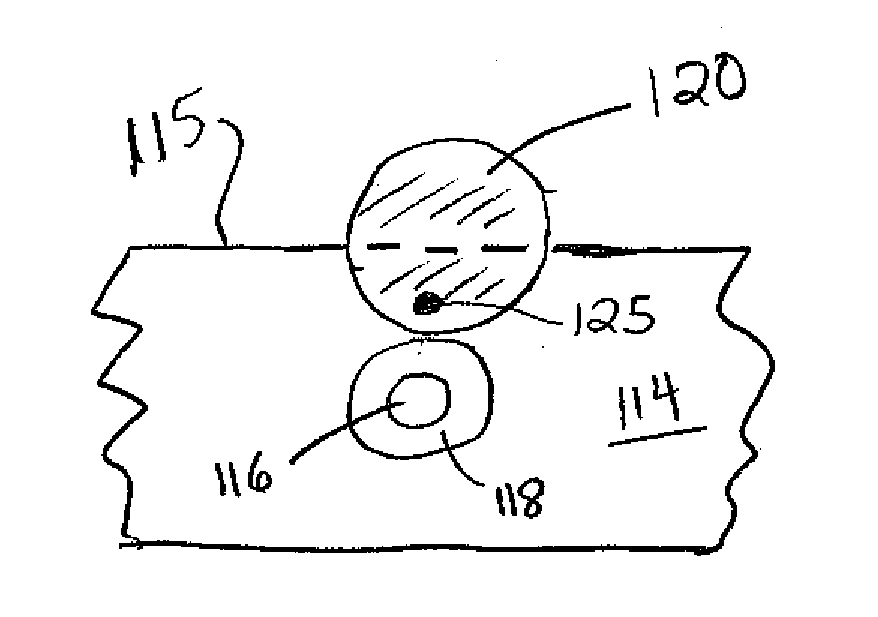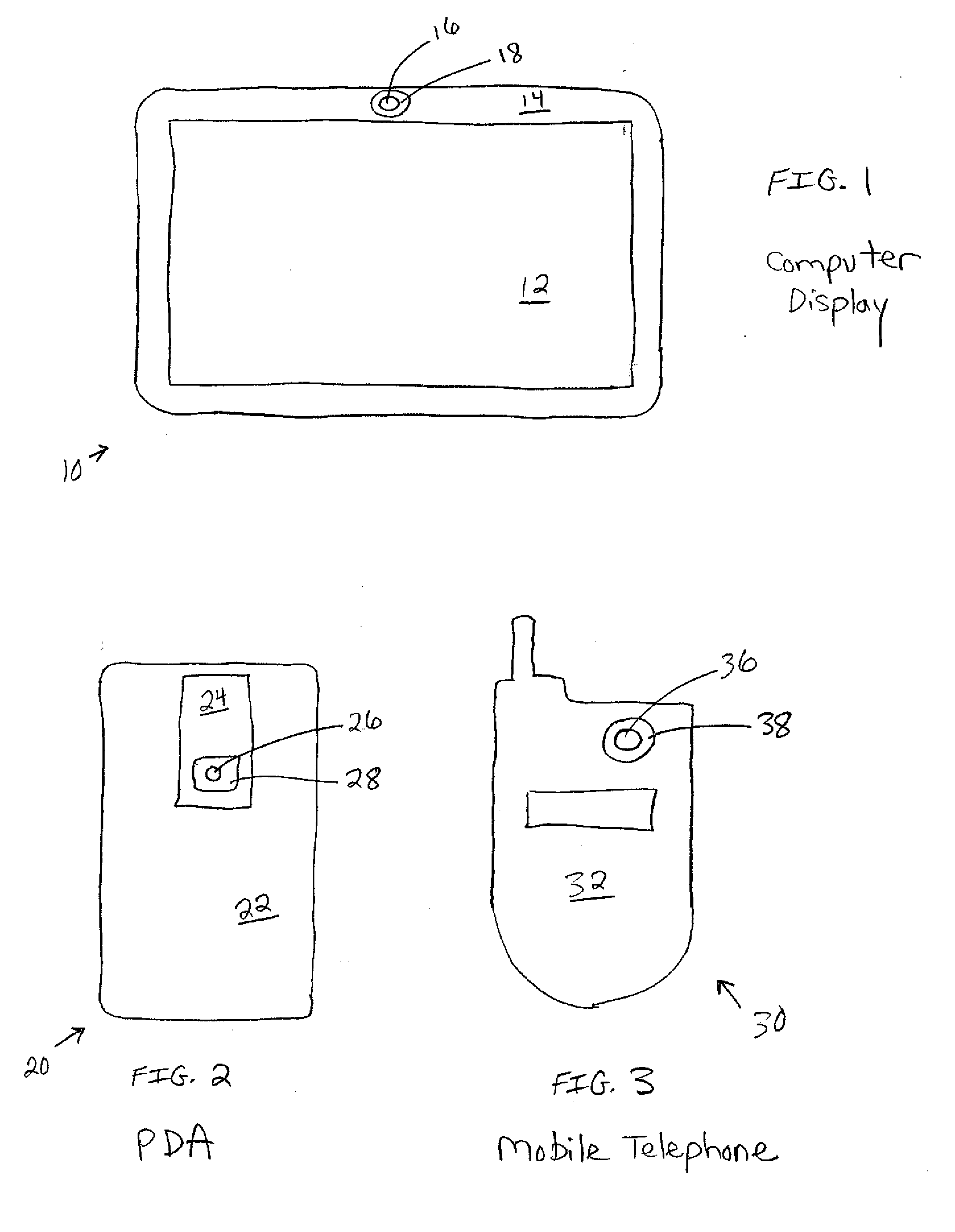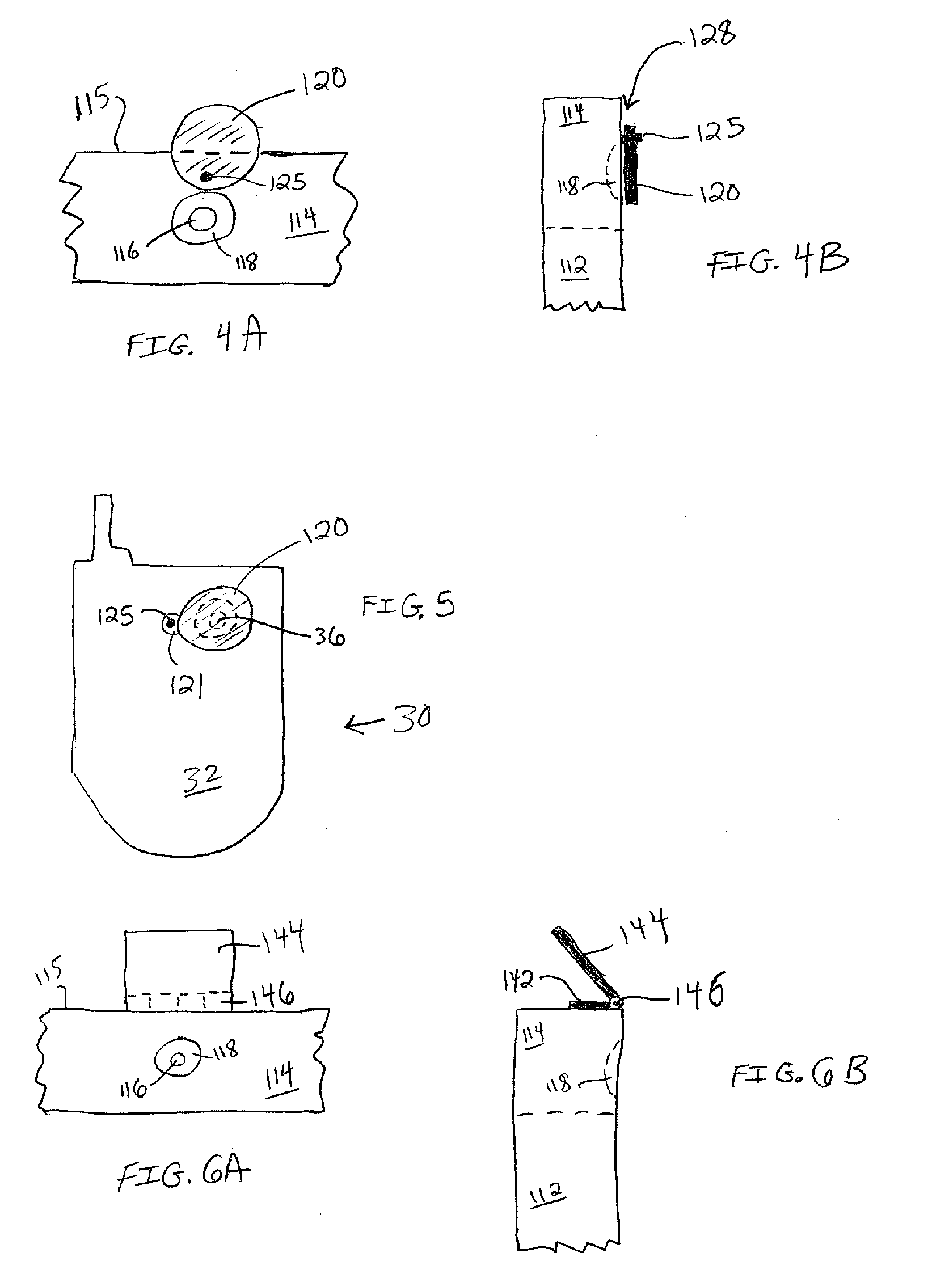Computer, PDA or telephone lens cover
a technology for telephones and computers, applied in the field of camera or projector covers, can solve problems such as the inability of the camera to view objects
- Summary
- Abstract
- Description
- Claims
- Application Information
AI Technical Summary
Benefits of technology
Problems solved by technology
Method used
Image
Examples
first embodiment
[0032]FIGS. 4A and 4B illustrate the cover of the present invention in which it pivots in order to cover the lens. Shown is a border area 114 in which sits a camera lens 116 within a recessed area 118. Border area 114 may correspond to area 14 which is the top part of the display of a laptop or desktop computer, may correspond to area 24 which is a portion of the back surface of a smartphone, or may correspond to area 32 which is the front surface of a flip telephone. Edge 115 is the top edge of the border area 114 meaning that it may correspond to the top edge of display 10, the top edge of PDA 20, or the top edge of mobile telephone 30.
[0033]As shown, cover 120 includes within its circumference a pivot pin 125 that is affixed to the surface of area 114. The cover is allowed to pivot around this pin such that in the open position (as shown) the lens 116 is allowed to receive (or project) images. By fixing the cover to the surface fairly tightly with the pivot pin, friction keeps th...
second embodiment
[0036]FIG. 5 illustrates a second embodiment in which the cover is mounted upon a mobile telephone 30. In this embodiment cover 120 also pivots around pivot pin 125 in order to cover or uncover lens 36. Formed as part of cover 120 is a protuberance 121 of any suitable shape that closes the pivot pin 125. Thus, the pivot pin is not within the circumference of the cover proper, as it is in FIG. 4A. In this embodiment, friction again may be used to keep the cover either open or closed.
third embodiment
[0037]FIGS. 6A and 6B illustrate a third embodiment in which the cover hinges in order to cover the lens. The cover includes a fixed portion 142 attached to the top of the computer, a hinge portion 146, and a movable portion 144. FIG. 6A shows a front view in which the movable portion 144 has been raised upward and the lens 116 is clear, while FIG. 6B is a side view of the same situation. When desired, the user manually moves portion 144 downward so that it hangs more or less straight down vertically and covers the camera lens. When used with a computer display 10, gravity holds the cover down. When used with PDA 20 or telephone 30, it may be necessary to fix movable portion 144 to surface 114 using hook and loop closures, a snap, a latch, or other techniques described herein. Hinge portion 146 may be a conventional pin-type hinge using rigid materials, or may simply be a crease in flexible materials such as soft plastic. The other embodiments described below in which a hinge is use...
PUM
 Login to View More
Login to View More Abstract
Description
Claims
Application Information
 Login to View More
Login to View More - R&D
- Intellectual Property
- Life Sciences
- Materials
- Tech Scout
- Unparalleled Data Quality
- Higher Quality Content
- 60% Fewer Hallucinations
Browse by: Latest US Patents, China's latest patents, Technical Efficacy Thesaurus, Application Domain, Technology Topic, Popular Technical Reports.
© 2025 PatSnap. All rights reserved.Legal|Privacy policy|Modern Slavery Act Transparency Statement|Sitemap|About US| Contact US: help@patsnap.com



